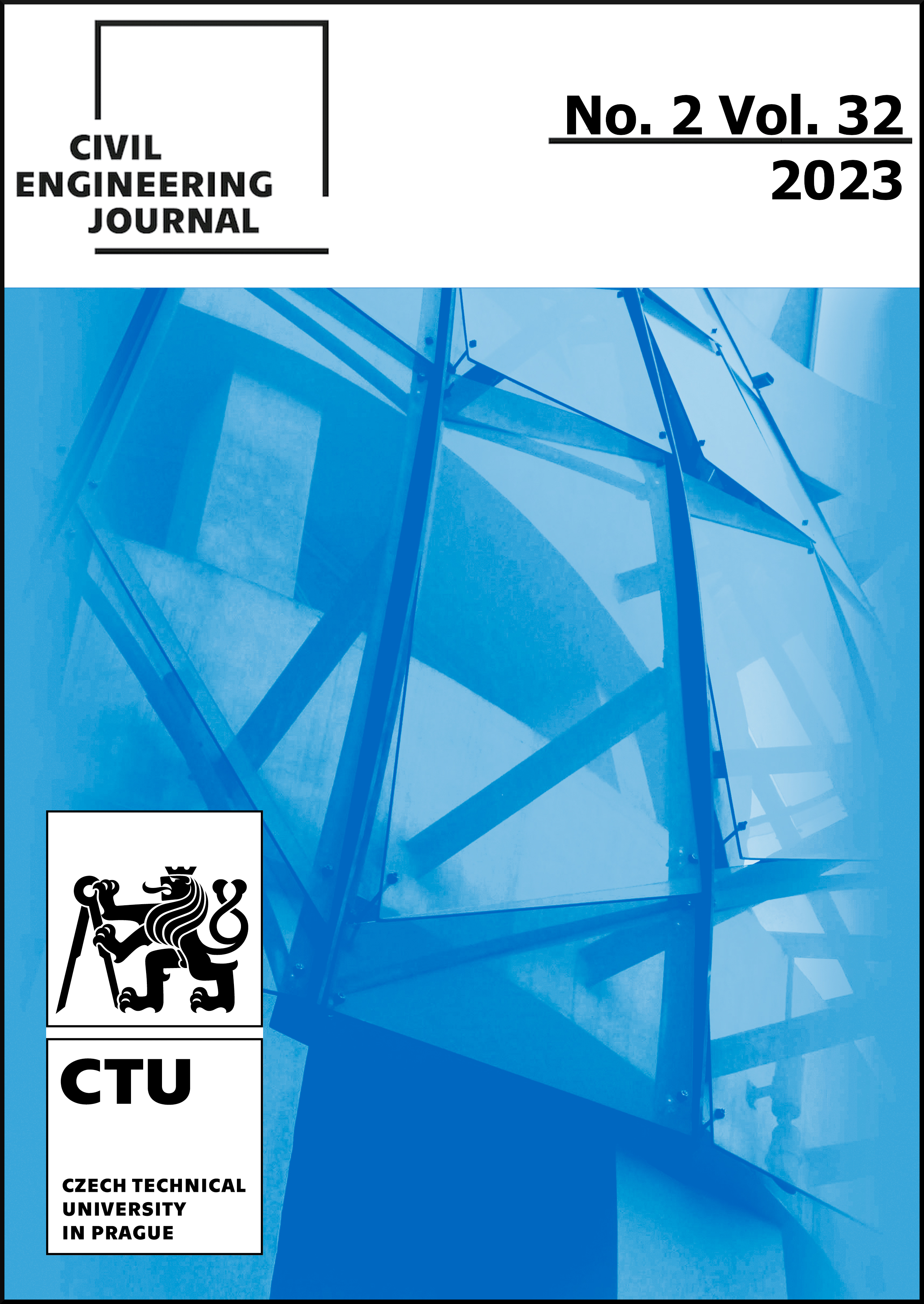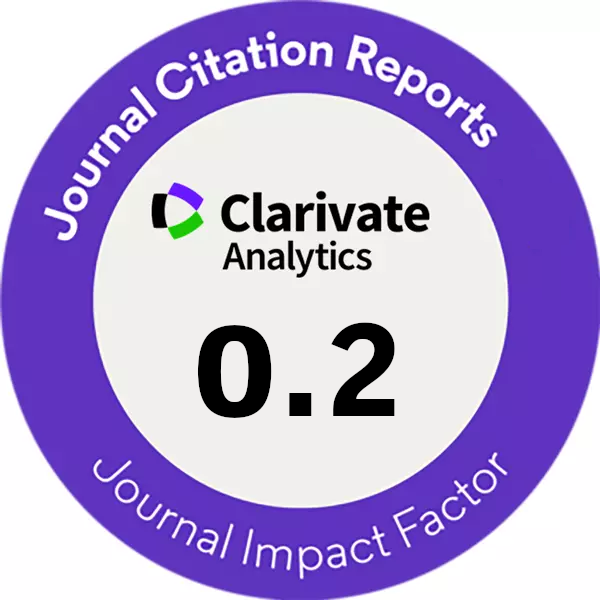STUDY ON EARTHQUAKE DESTRUCTION MODE OF THE LARGEST CANAL CROSSING HIGHWAY BRIDGE BASED ON IEM BOUNDARY IN SOUTH-TO-NORTH WATER DIVERSION
DOI:
https://doi.org/10.14311/CEJ.2023.02.0012Keywords:
Cross channel highway bridge for South-to-North Water Diversion, Infinite element method boundary, FE-IE coupling, Plastic damage constitutive, Earthquake damage evolutionAbstract
To study the dynamic failure mechanism and damage development law of highway bridge structure under the boundary effect in the process of seismic dynamic duration, the Wenchang Highway Bridge with the largest canal crossing in the South-to-North Water Diversion is taken as an example for seismic design analysis. Based on the finite element and infinite element coupling theory, the infinite element method boundary is introduced, the concrete damage plasticity is introduced, and the half-space free field model is established to study the energy dispersion phenomenon of waves in the boundary and the absorption effect of the infinite element method boundary on wave energy is verified. Under different peak acceleration intensities, the seismic response analysis of the bridge structure was carried out. The results show that: Under the action of selected artificial waves, the damage location of the bridge mainly concentrated in the junction of the box girder supported by the pier, the bottom of the pier and the junction of the pier and beam. The damage tends to develop downward near the bottom of the box girder. The damage at both ends of the beam extends from both ends to the middle. And the bottom and top of the pier have penetrating damage. These are weak points in seismic design. At a horizontal peak acceleration of 0.6g, in addition to damage to the pier column, damage also occurred to the bottom of the box girder. Therefore, when the horizontal peak acceleration of the seismic wave is greater than 0.6g, the failure of the bottom of the box girder is paid attention to. Moreover, the IEM boundary has a good control effect on the far-field energy dissipation of the wave, which is simpler and more efficient than the viscous–spring boundary.
Downloads
References
Long D., Yang W., Scanlon B.R., et al., 2020. South-to-North Water Diversion stabilizing Beijing's groundwater levels. Nature Communications, vol. 11: 1-10. http://doi.org/10.1038/s41467-020-17428-6
Xie W., Sun L. M., 2014. Study on Seismic Damage and Failure Patterns of Super Long-Span Cable-Stayed Bridge under Earthquake. Earthquake Engineering & Engineering Dynamics, vol.1 : 127-135. http://doi.org/10.13197/j.eeev.2014.06.127.xiew.017
Deng Y. L., Lei F., He X. J., 2015. Study on Effects of Pounding at Expansion Joints on Seismic Responses of Long-Span Cable-Stayed Bridges between Main Span and Multiple Approach Spans under Earthquakes. China Civil Engineering Journal, vol. 48: 87-95. http://doi.org/10.15951/j.tmgcxb.2015.02.013
Zhu X., Jiang H., 2009. Performance-Based Seismic Design Method for Rc Bridge Piers. China Civil Engineering Journal, vol. 42 :85-92.
TONGAONKAR N. P., JANGID R. S., 2003. Seismic response of isolated bridges with soil–structure interaction. Soil Dynamics and Earthquake Engineering, vol. 23: 287-302. http://doi.org/10.1016/S0267-7261(03)00020-4
Shi Y., Zhang F. J., Han J. P., et al., 2020. Seismic damage analysis of a long-span continuous rigid frame bridge with high piers during typical construction stages. Zhendong yu Chongji/Journal of Vibration and Shock, vol. 39 : 89 - 95. http://doi.org/10.13465/j.cnki.jvs.2020.22.013
Guo W., Wang Y., Ge C. Y., et al., 2020. Seismic failure features of multi-span simply supported girder bridges of high-speed railway under near-fault earthquake. Zhendong yu Chongji/Journal of Vibration and Shock, vol. 39 : 210-218. http://doi.org/10.13465/j.cnki.jvs.2020.17.028
Wang J. Y., Yuan W. C., 2020. Numerical simulation of the response and damage of girder bridges subjected to the combined action of earthquake and blast. Harbin Gongcheng Daxue Xuebao/Journal of Harbin Engineering University, vol. 41 : 643-649. http://doi.org/10.11990/jheu.201812013
Farahmand-Tabar S., Barghian M., 2020. Seismic assessment of a cable-stayed arch bridge under three-component orthotropic earthquake excitation. Advances in Structural Engineering, vol. 24 : 227–242. http://doi.org/10.1177/1369433220948756
Li C., Diao Y., Li H.-N. et al., 2023. Seismic performance assessment of a sea-crossing cable-stayed bridge system considering soil spatial variability. Reliability Engineering & System Safety, vol. 235: 109210. http://doi.org/ 10.1016/J.RESS.2023.109210
Li J., Xu L., 2023. Seismic performance improvement of continuous rigid-frame bridges with hybrid control system under near-fault ground motions. Soil Dynamics and Earthquake Engineering, vol. 168: 107858. http://doi.org/10.1016/J.SOILDYN.2023.107858
Chu Y., Li R., Li X., 2022. Analysis of Seismic Response of the Arch Bridge across Reservoir considering Fluid-Solid Coupling Effect. Shock and Vibration, vol. 2022. http://doi.org/10.1155/2022/3873935
Deng Y., Ge S., Lei F., 2023. Effects of Pounding and Abutment Behavior on Seismic Response of Multi-Span Bridge Considering Abutment-Soil-Foundation-Structure Interactions. Buildings, vol. 13: 260. http://doi.org/10.3390/BUILDINGS13010260
Addessi D., Gatta C., Nocera M. et al., 2021. Nonlinear dynamic analysis of a masonry arch bridge accounting for damage evolution. Geosciences, vol. 11: 343. http://doi.org/10.3390/GEOSCIENCES11080343
LYSMER J., KUHLEMEYER R. L., 1969. Finite dynamic model for infinite media. Journal of the Engineering Mechanics Division, vol. 95 : 859-878. http://doi.org/10.1061/JMCEA3.0001144
DEEKS A. J., RANDOLPH M. F., 1994. Axisymmetric time-domain transmitting boundaries. Journal of Engineering Mechanics, vol. 120 : 25-42. http://doi.org/10.1061/(ASCE)0733-9399(1994)120:1(25)
Liu J. B., Lv Y. D., 1998. A Direct Method for Analysis of Dynamic Soil-Structure Interaction Based on Interface Idea. China Civil Engineering Journal, 1998. vol.83 : 3-5.
He J. T., Ma H. F., Zhang B. Y., et al., 2010. Method and realization of seismic motion input of viscous-spring boundary. Journal of Hydraulic Engineering, vol.41 : 960-969.
Liao Z. P., Huang K. L., Yang B, P., et al., 1984. A Transmitting Boundary for Transient Wave Analyses. Science in China Series A-Mathematics, Physics, Astronomy & Technological Science, vol. 27 : 1063-1076.
UNGLESS R. F., 1973. Infinite finite element ( University of British Columbia ).
Chow Y. K., Smith I. M., 1981. Static and periodic infinite solid elements. International Journal for Numerical Methods in Engineering, vol. 17 : 503-526. http://doi.org/10.1002/nme.1620170403
BETTESS P., 1984. A new mapped infinite element for exterior wave problems. Numerical methods in coupled systems.
Asheghabadi M. S., Ali Z., 2020. Infinite element boundary conditions for dynamic models under seismic loading. Indian Journal of Physics, vol. 94 : 907-917. http://doi.org/10.1007/s12648-019-01533-4
Qi Y. L., Hisanori O., 2014. Study of Abaqus Dynamic Infinite Element Artificial Boundary. Rock and Soil Mechanics, vol. 35 : 3007-3012. https://doi.org/10.16285/j.rsm.2014.10.037
Zhang C. H., Zhao C. B., 1987. Coupling method of finite and infinite elements for strip foundation wave problems. Earthquake engineering & structural dynamics, vol.15 : 839-851. https://doi.org/10.1002/eqe.4290150705
Downloads
Published
Issue
Section
License
Copyright (c) 2023 Author

This work is licensed under a Creative Commons Attribution-NonCommercial 4.0 International License.
Authors who publish with this journal agree to the following terms:
- Authors retain copyright and grant the journal right of first publication with the work simultaneously licensed under a Creative Commons Attribution License that allows others to share the work with an acknowledgement of the work's authorship and initial publication in this journal.
- Authors are able to enter into separate, additional contractual arrangements for the non-exclusive distribution of the journal's published version of the work (e.g., post it to an institutional repository or publish it in a book), with an acknowledgement of its initial publication in this journal.
- Authors are permitted and encouraged to post their work online (e.g., in institutional repositories or on their website) prior to and during the submission process, as it can lead to productive exchanges, as well as earlier and greater citation of published work (See The Effect of Open Access).
How to Cite
Accepted 2023-05-16
Published 2023-07-31











